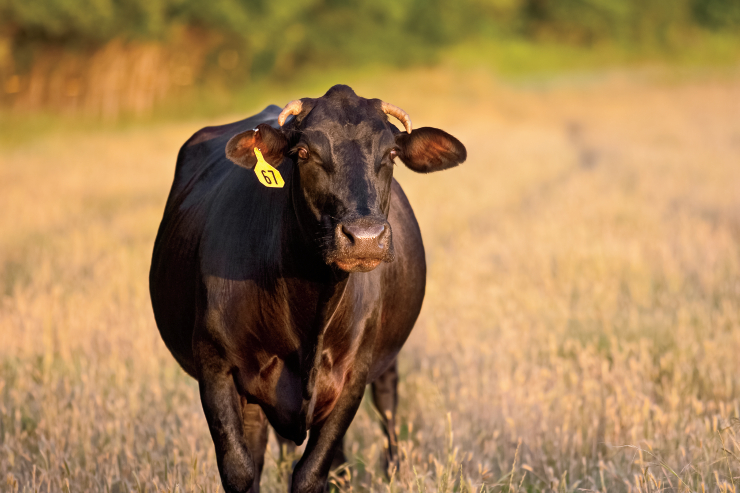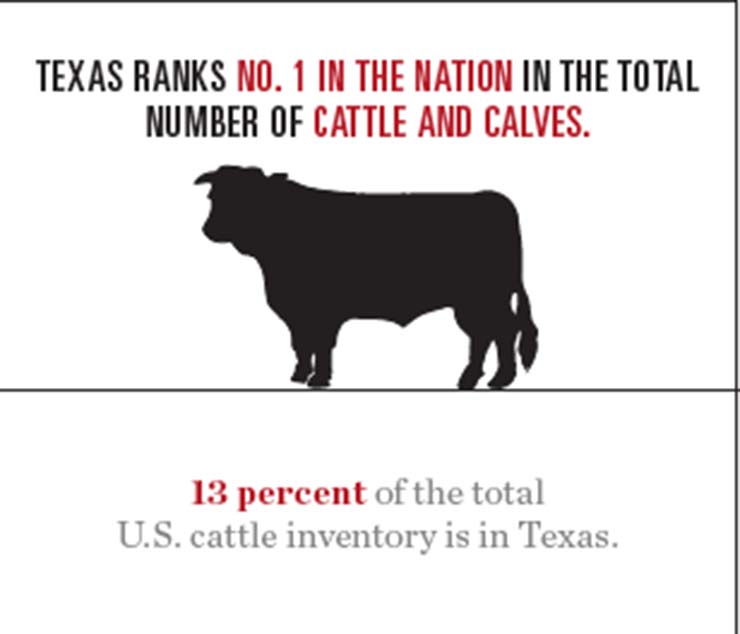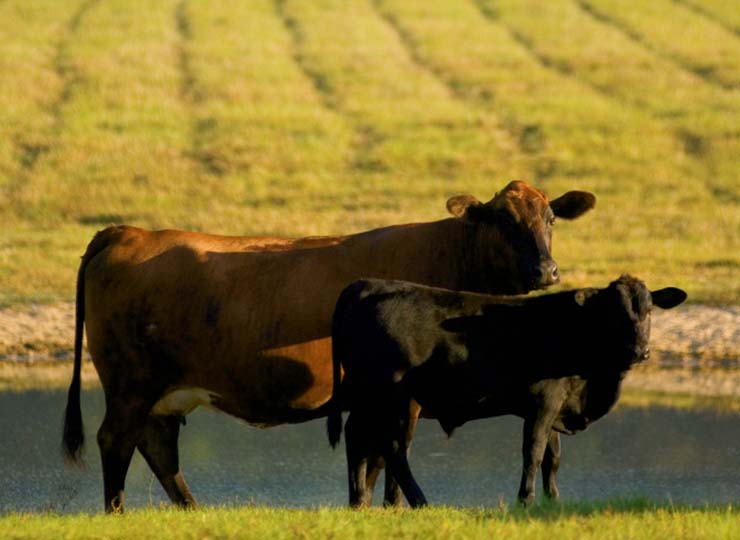Home > Texas > Texas Crops & Livestock > Texas Beef Industry Dominates Ag Economy
Texas Beef Industry Dominates Ag Economy
In partnership with: Texas Department of Agriculture

Texas cattle ranchers continue to feel the heat as drought dried up most of the state’s pastures through early 2013.
But Texas didn’t become the country’s leading cattle state without meeting challenges, and each segment of the industry is positioning for recovery.
“The beef cattle industry in Texas has three main segments,” says Tom Hairgrove, a veterinarian and program coordinator for Texas A&M AgriLife Extension.
Three Industry Segments
Cow-calf producers raise the calf from birth to weaning age, which is when the calf no longer nurses from the cow. Stockers and cow-calf producers grow the weaned calf on pastures to a heavier weight. Cattle feeders, or feedlots, raise cattle from stocker weights to harvest.
“Producers usually focus on one segment, but even though they’re independent, they rely on each other,” Hairgrove says.
One quarter of the nation’s fed cattle are raised here in Texas. Cow-calf and stocker operations are located statewide, with much of the state’s cow herd concentrated in the eastern part of the state. However, many of the state’s largest ranches, covering the most area, can be found in West and South Texas. In a display of cooperation between Texas farmers and ranchers, more than 1 million cattle annually graze wheat pastures in North and West Texas. Feedlots also can be found across the state, with most located near abundant feed supplies in the Panhandle and South Texas.
“In South Texas, we’re utilizing our locally-grown products to feed cattle a balanced, healthy feed,” says Jay Gray, general manager at Graham Land & Cattle in Gonzales. “We use products from cotton, peanuts, corn and soybeans for protein and roughage.”

Feed Challenges
Texas hay, corn and grain sorghum are widely used by the industry’s three segments. Cattle feed requires rain, and the recent drought drove home the industry’s interdependence between sectors.
“Without grass in the pastures, it is very difficult to raise cattle numbers,” says Gray.
In 2013, there were more than 4 million beef cows kept by Texas cow-calf producers, down 24 percent since 2007. However, there are modest signs of expansion in the state’s beef cow herd, with 50,000 more beef replacement heifers reported in 2013 than 2012.
“There’s this mystique to ranching in Texas, but the reality is we’re still a pretty rural state that can accommodate a lot of cattle,” says Jason Cleere, beef specialist with Texas A&M AgriLife Extension.
Dealing with extended drought has forced Texas ranchers to become even better producers.
“We’ve been talking about ‘precision farming’ for a long time; now we need to have ‘precision ranching,’ ” says Cleere.

Precision Ranching
That means precisely measuring nutrient content in soils and forages, and evaluating the genetics that help make Texas beef world-famous.
Improving beef production profits is always a concern, and Texans have found ways to add more value to their beef. Nolan Ryan’s Beef is specially-fed and aged to increase tenderness, palatability and vitamin E content.
“A lot of the Nolan Ryan’s Beef product stays in Texas at restaurants and food service,” says Jay Gray, whose company has finished cattle according to Nolan Ryan’s Beef guidelines.
Other Texans have focused on intensive grazing to produce an entirely grass-fed beef.
More Than Juicy Steaks
Texas cattle hides are used by Toyota and other automakers for seat leather. Even that use depends on cooperation between cattle industry segments.
“We require animals coming into our feedlots to be identified with brands in locations that will not affect the hides,” says Gray.
In 2013, Texas A&M hosted a major cattle industry event themed “Rebuilding the Cow Herd.”
Tom Hairgrove and Jason Cleere say topics addressed included herd health, pasture and forage management, and genetics – all issues concerning to every type of Texas beef producer, whether cow-calf, stocker or feeder.




[…] https://farmflavor.com/texas/texas-crops-livestock/texas-beef-industry-dominates-ag-economy/ […]